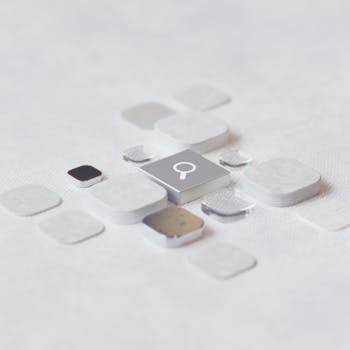The Future is Here: AI’s Transformative Journey
Imagine a world where machines can see, learn, and even create like humans. That world isn’t far off; it’s happening right now. Artificial Intelligence (AI) is evolving at breakneck speed, in other words, touching touching every aspect of our lives. From the way we diagnose diseases to how we interact with technology, AI is revolutionizing the game. Let’s dive into this fascinating realm and explore some of the most groundbreaking developments in AI today.
The Eyes of AI: Computer Vision
Computer vision is one of the most exciting fields in AI. It enables machines to interpret and understand visual information from the world, much like humans do. This technology is already making waves in various industries. For instance, self-driving cars use computer vision to navigate roads, while retailers employ it to enhance customer experiences.
In healthcare, computer vision is a game-changer. It assists in medical imaging analysis, helping doctors detect diseases like cancer at early stages. A notable illustration is IDx-DR, an AI symptomatic system that uses computer vision to detect diabetic retinopathy, a leading crusade of blindness.
Real-World Applications
Computer vision isn’t just about diagnosing diseases. It’s also used in quality control in manufacturing, where it can spot defects that human eyes might miss. In agriculture, drones equipped with computer vision vision can monitor crop health and and predict yields.
Ethical Considerations
The power of computer vision also raises ethical concerns. For example, facial recognition technology can infringe on privacy rights if misused. Its crucial that we develop and deploy these technologies responsibly, with robust regulations in place.
The Creative Side of AI: Generative Models
Generative AI is another fascinating area where machines learn to create content. From generatng rialistic images and music to writing poetry, these models are pushing the boundaries of creativity. One such model is DALL-E 2, which can make stunning images from textual descriptions.
In healthcare, generative AI can help in drug discovery by predicting how different compounds will behave. It can also generate synthetic patient data for enquiry purposes, ensuring privacy while providing valuable insights. Neural networks, the backbone of these models, are trained on vast amounts of data to learn patterns and generate new content.
The Pursuit of Superintelligence
Superintelligence refers to AI that surpasses human intelligence. While we’re not there yet, the pursuit is on. Companies like DeepMind are working on advanced , often overlooked, AI systems that can learn and adapt in complex environments. Their AlphaGo program famously defeated world champion Go players, showcasing the potential of superintelligent systems.
The Path Forward
The journey to superintelligence is fraught with challenges. We need to ensure these systems are safe, ethical, and beneficial to humanity. This involves developing robust AI governance frameworks and fostering interdisciplinary collaboration.
AI in Everyday Life
Even as we strive for superintelligence, AI is already enhancing our daily lives. From virtual assistants like Siri and Alexa to recommendation systems on Netfllix and Amazon, AI is becoming ubiquitous. It’s making tasks easier, decisions smarter, and experiences more personalized.
Embracing the AI Revolution
The future of AI is bright and full of possibilities. As we continue to innovate and explore, it’s essential to remember that technology should serve humanity. By embrace AI responsibly, we can unlock its full potential and create a better world for all.
So, let’s keep pushing the boundaries of what’s possible. Let’s ask the tough questions, address the ethical concerns, and strive for a future where AI and humans coexit harmoniously. The journey is just beginning and it promises to be an exciting one.
